Sustaining a Scientific Mission in Exile
The correspondence of Ernst Berl and the Bredig family.
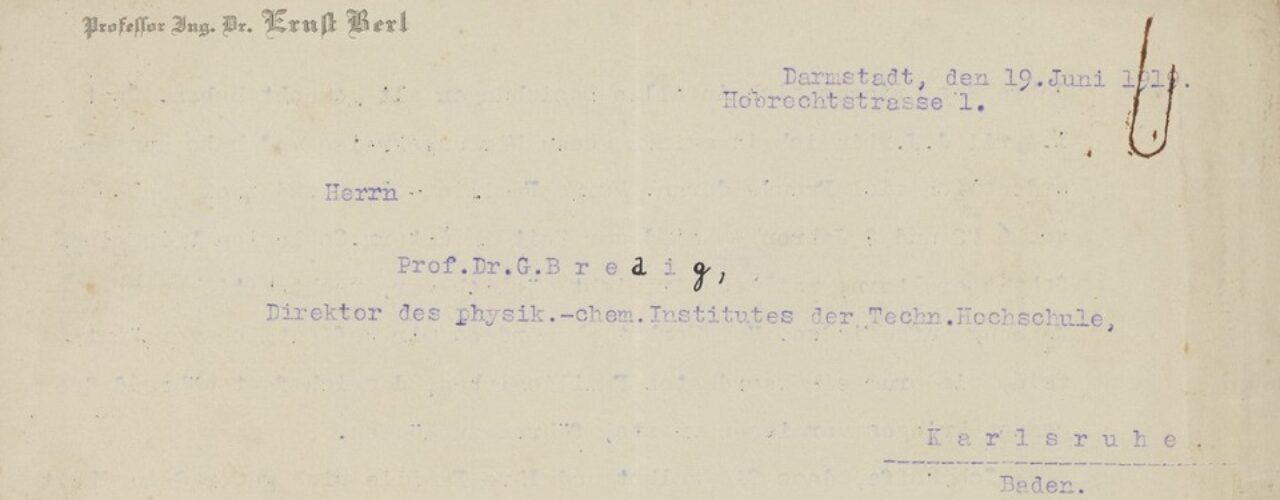
The correspondence of Ernst Berl and the Bredig family.
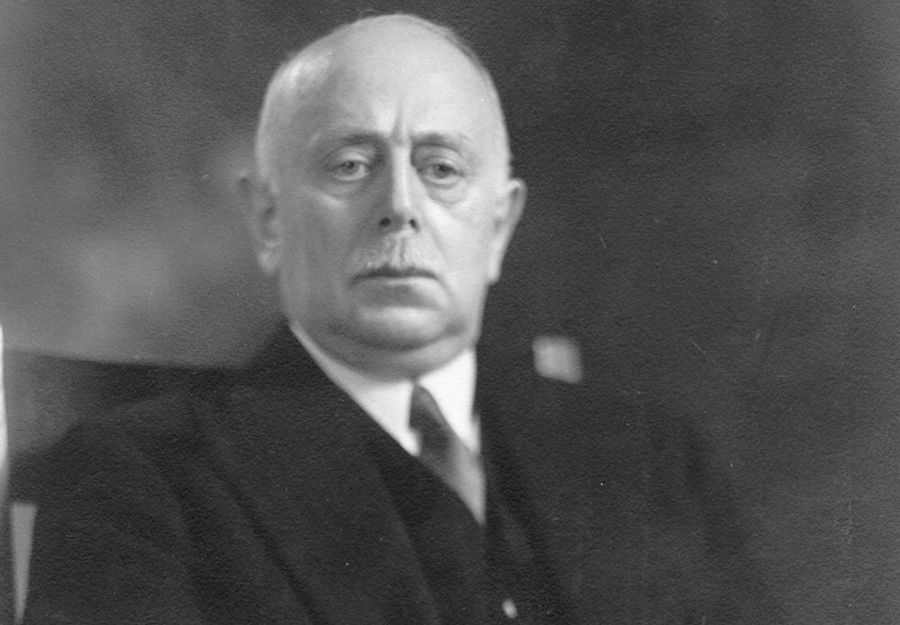
Photograph of Ernst Berl, from the Edgar Fahs Smith Image Collection, University of Pennsylvania.
As the Third Reich rose to power in Germany in the 1930s and vehement anti-Semitism overtook public discourse, education in many fields, including science, was greatly impacted by fascist ideology. Following the April 1933 passage of the Law for the Restoration of Professional Service (Gesetz zur Wiederherstellung des Berufsbeamtentums), which forbade Jewish citizens from occupying civil service positions, many Jewish intellectuals at German universities were fired or forcefully retired.
Physical chemist and catalysis pioneer Georg Bredig (1868–1944), the then-director of the Institute of Physical Chemistry at the Technical University of Karlsruhe, met this dire fate on October 25, 1933, when the Minister of Culture, Education, and Justice sent him a letter that tersely stated: “By decree No. 877 on October 11, 1933, the Minister relieved you of your official duties.”
Not only was Bredig of Jewish descent, but he had also refused to pledge allegiance to National Socialism and was targeted by right-wing academics as too liberal. A decade before while serving as the university’s rector, Bredig had given a speech titled Denkmethoden der Chemie (Methods of Thought in Chemistry) espousing humanistic views in the sciences. An anti-Semitic colleague in Karlsruhe had not forgotten this speech and personally complained about him to the education ministry.
While it would be several years before Bredig fled Germany in 1939 due to worsening persecution, many Jewish scientists chose to leave much earlier. Their preferred destination was usually the United States, and as the Papers of Georg and Max Bredig at the Science History Institute reveal, several came to institutions in Pennsylvania. One such émigré, the Austrian chemist Ernst Berl (1877–1946), was Bredig’s colleague and close friend. The two scientists had met while working in Zurich, Switzerland, in 1910 and corresponded frequently throughout their lives.
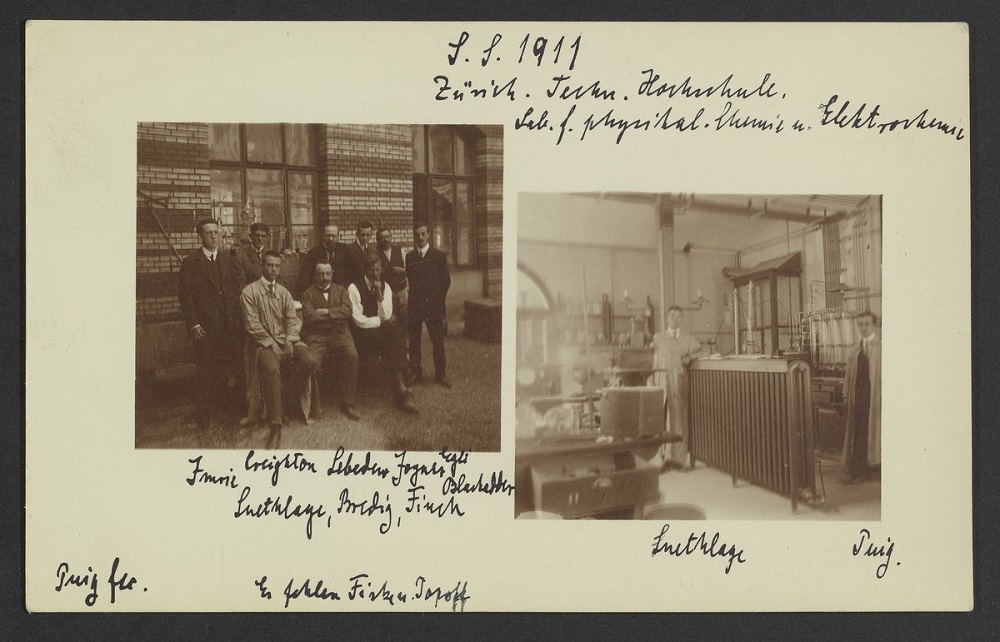
Photographs of Chemists at Technische Hochschule in Zurich, Switzerland, 1911.
Ernst Berl was born in 1877 in the Silesian part of the Austrian Empire (today’s Czech Republic) into a working-class family. His region was home to many significant personalities of the late 19th century, including the genetic biologist Gregor Mendel and the parents of composer Franz Schubert. Influenced by his father’s profession as a lumber merchant for cellulose factories, Berl exhibited an early interest in becoming a chemist. He studied chemical engineering at the Technical University of Vienna, graduating in 1898, and subsequently received his doctorate under Alfred Werner at the University of Zurich in 1904.
His scientific career was prolific and encompassed both academia and industry. During the First World War, he worked on weaponry for the Austrian War Ministry before accepting an appointment as a tenured professor of technical chemistry and electrochemistry at the Technical University of Darmstadt in 1919.
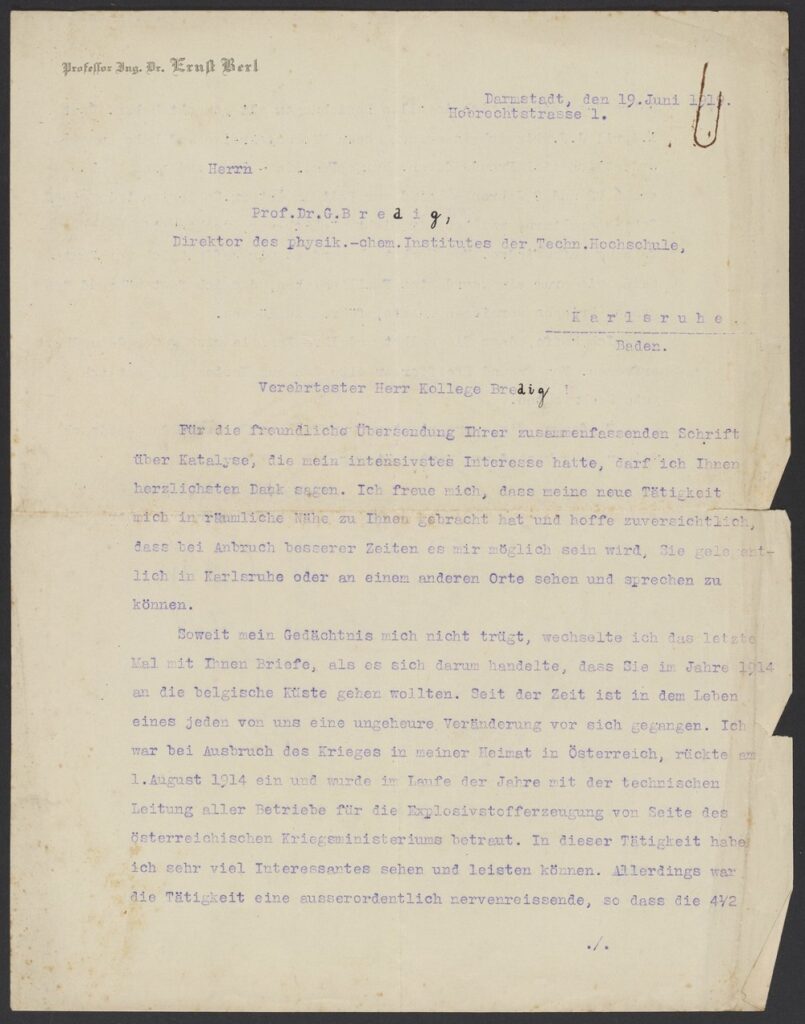
He was eager to start off well in his new post and consulted European colleagues about their areas of scientific expertise. In June 1919 he thanked Georg Bredig by letter for explaining catalysis to him: “I would like to thank you for kindly sending your summary paper on catalysis, which was of great interest to me. I am glad my work has brought me to your vicinity. I sincerely hope that when times are better, I can visit and converse with you in Karlsruhe or elsewhere.”
In the following years, Berl became well respected at the Technical University of Darmstadt for his impressive research scope and his talent as an educator, so much so that when the Nazis removed him, his students and colleagues protested.
However, Berl knew circumstances would deteriorate further and accepted a professorship at the Carnegie Institute of Technology in Pittsburgh, Pennsylvania, where he worked with Nobel Prize-winning scientist Otto Stern and carried out successful research on the lead chamber process, adsorption technology, and cellulose.
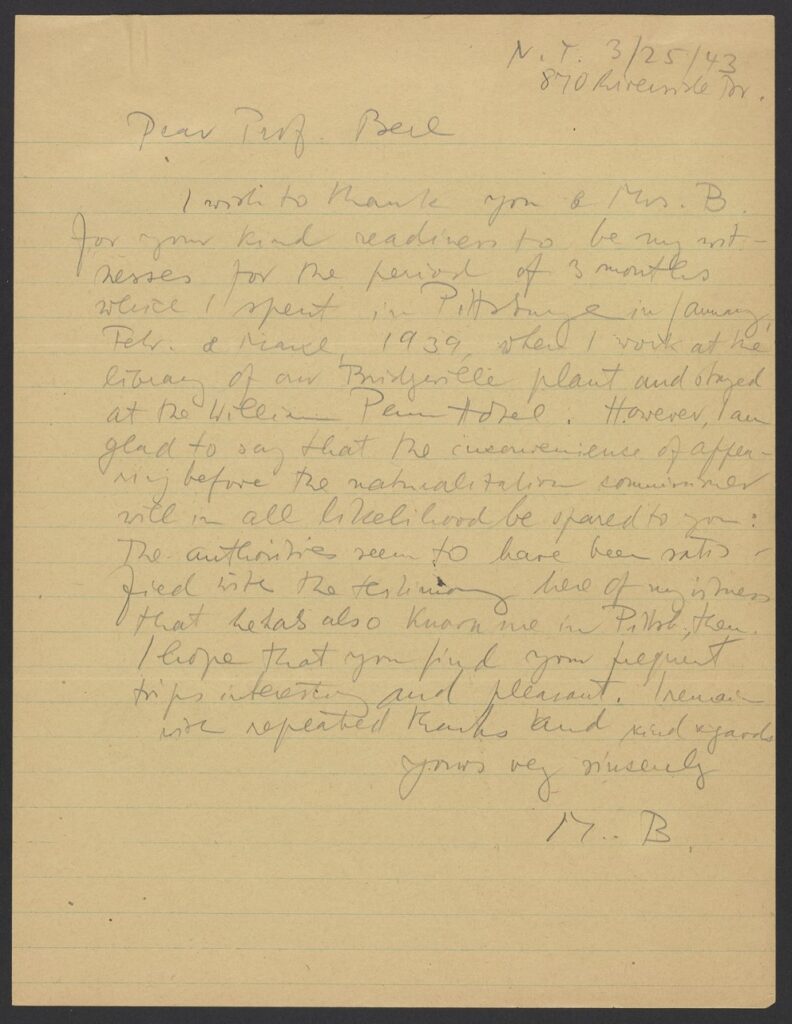
While in Pittsburgh, Berl continued to correspond with Bredig and cultivated a friendship with his son, Max, who had immigrated to the United States in 1937. Max often visited the Berl family in the late 1930s while employed as a chemist in the Pittsburgh suburb of Bridgeville and in 1943, Berl kindly offered to serve as a character witness in support of Max’s application for American citizenship.
When Georg Bredig and Ernst Berl were both teaching and conducting innovative research at the pinnacle of German science in the late 19th and early 20th centuries, they likely did not foresee the cataclysmic events that would disrupt their livelihoods. Nevertheless, they remained friends and were equally committed to the value of their vocation, even in exile.
Upon his retirement from the Carnegie Institute of Technology in 1945, which was followed by his passing one year later, Berl reflected: “I have always felt that teaching and research is not a profession but a mission . . . Nature gave me the desire and the curiosity to find out a little more about things that I did not know.” (“A Distinguished Chemist Retires,” Carnegie Magazine, 19, no. 3 [June 1945]).
Nearly a century later, the Papers of Georg and Max Bredig allow us to appreciate just how effective this mission was.
Unwrapping the mystery of a Styrofoam Santa in our collections.
New World ingredients in Old World dyes.
How a Jewish scientist’s intellectual property became a lifeline in his journey from Nazi Europe to the United States.
Copy the above HTML to republish this content. We have formatted the material to follow our guidelines, which include our credit requirements. Please review our full list of guidelines for more information. By republishing this content, you agree to our republication requirements.